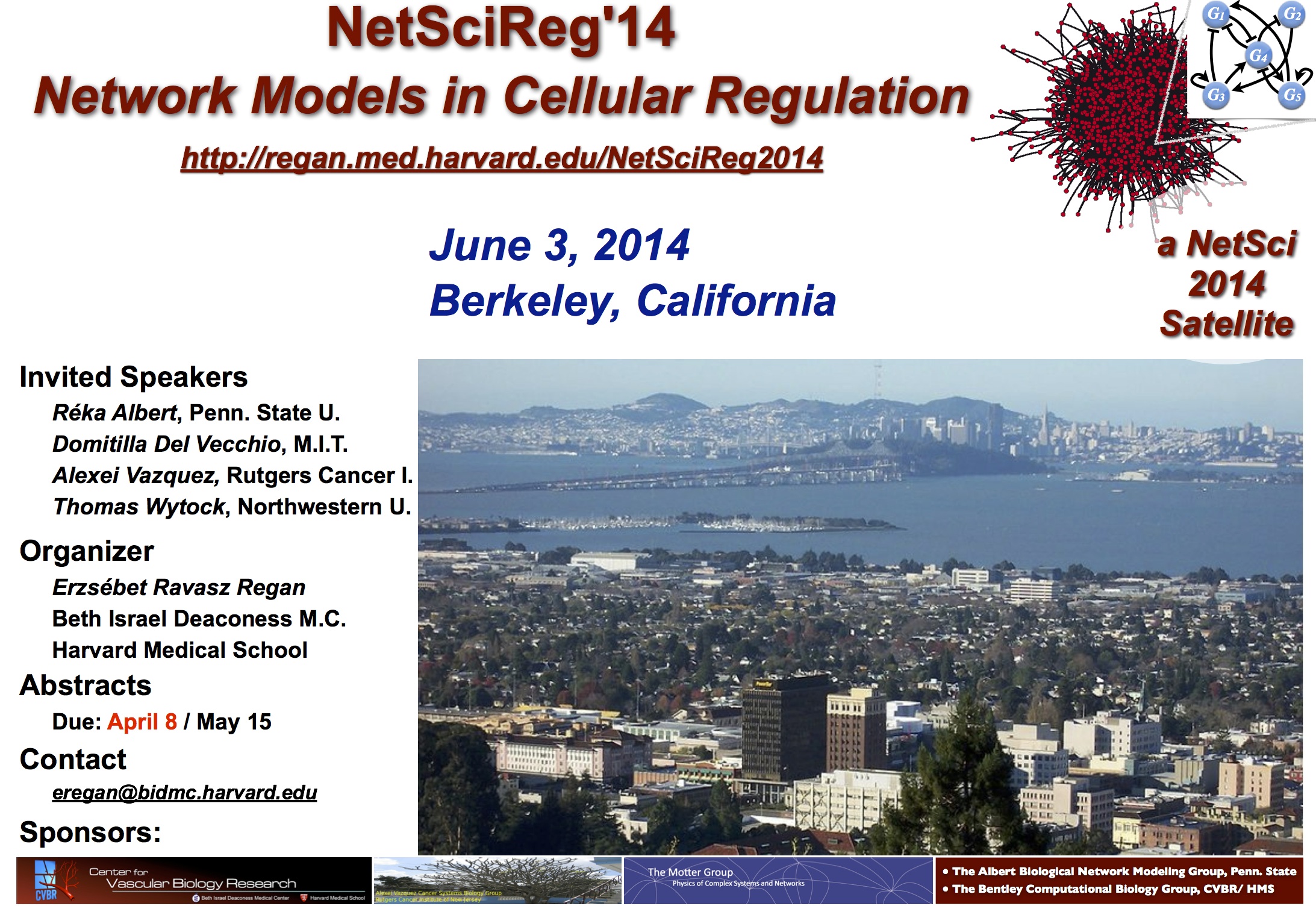NetSciReg'14 - Network Models in Cellular Regulation
June 3, 2014 - Berkeley, California
| Synopsis |
| Program |
| NetSciReg'14 Flyer |
| Important Dates |
| Registration |
| Call for Contributed Talks |
| Logistics |
| NetSci 2014 |
| NetSciReg'13 |
| Sponsors |
|
Time: 11:50 AM - 12:40 PM
Type: Invited presentation
Affiliation: Department of Radiation Oncology and Center for Systems Biology,
Abstract Prokaryote and eukaryote cells have two pathways for energy generation. One pathway is fermentative glycolysis, the catabolism of glucose to pyruvate and of pyruvate to a metabolic byproduct. Fermentative glycolysis has a yield of 2 ATP molecules per molecule of glucose and it is the default pathway under anaerobic conditions. The other pathway is oxidative phosphorylation, the catabolism of glucose to pyruvate followed by the oxygen dependent oxidation of pyruvate to carbon dioxide and water. Oxidative phosphorylation has a much higher yield of about 32 ATP molecules per molecule of glucose and it should be the default pathway under aerobic conditions. However, when increasing their metabolic rate, cells exhibit a metabolic switch from oxidative phosphorylation to fermentative glycolysis even in the presence of oxygen. The regulatory mechanism controlling this metabolic switch has been studied in detail in bacteria, unicellular eukaryotes and in the context of muscle and of cancer metabolism. Yet, the question of what is the advantage, if any, of this apparently wasteful phenotype has remained unanswered. We will demonstrate that there is indeed some advantage in this phenotype. As a matter of fact, we will show that this switch is the only possible solution at high metabolic rates, when the concentration of metabolic enzymes becomes a limiting factor. We will also show that the switch from oxidative phosphorylation to fermentative glycolysis is accompanied by a global flux redistribution in the metabolic network. In eukaryotes cells in particular, we predict the activation of yet a third for energy generation. Finally, we will discuss the potential manifestation of this metabolic switch due to the accumulation of protein aggregates, as observed in human neurodegenerative diseases. |
SPONSORS: |





